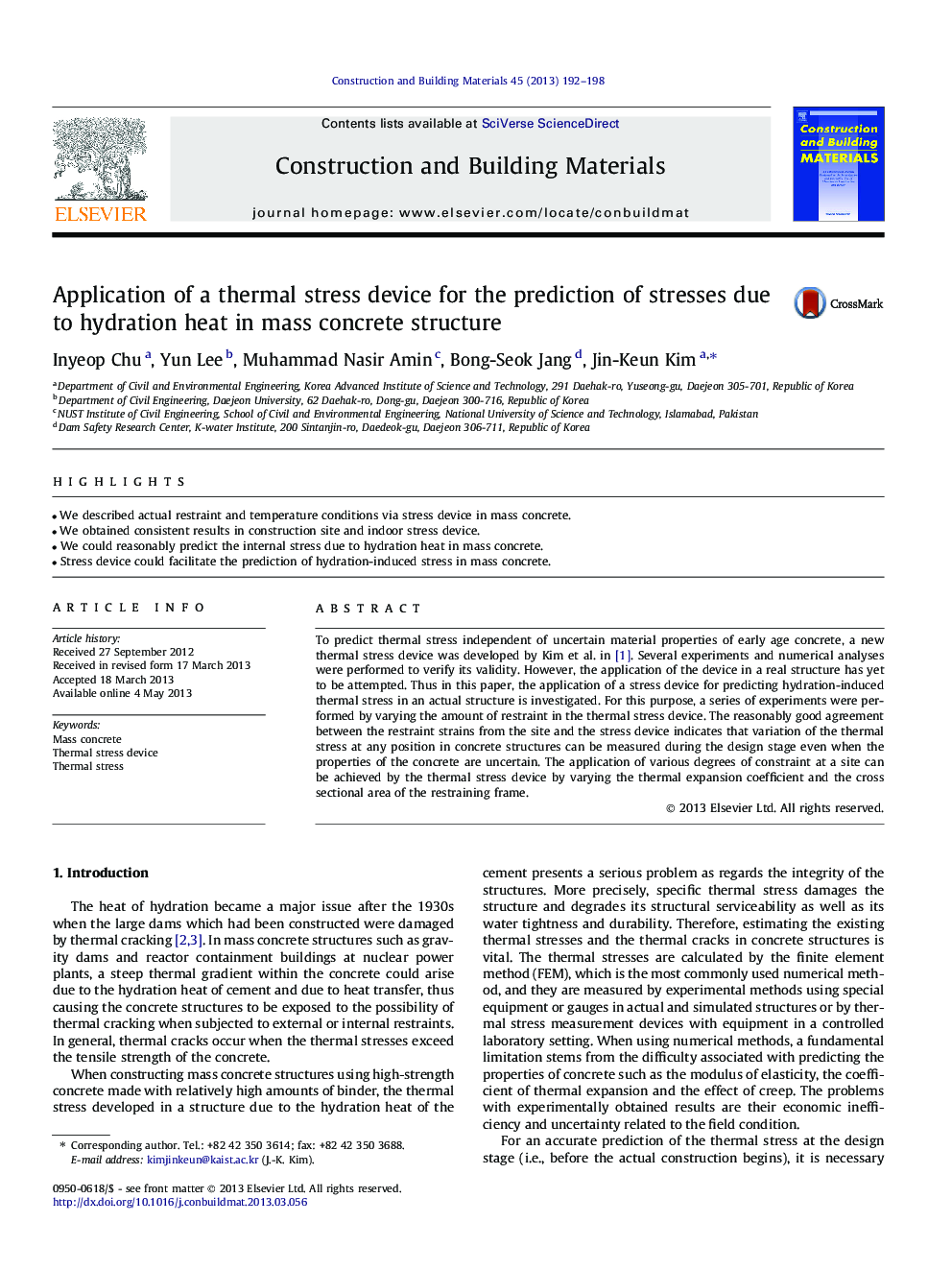| Article ID | Journal | Published Year | Pages | File Type |
|---|---|---|---|---|
| 258217 | Construction and Building Materials | 2013 | 7 Pages |
•We described actual restraint and temperature conditions via stress device in mass concrete.•We obtained consistent results in construction site and indoor stress device.•We could reasonably predict the internal stress due to hydration heat in mass concrete.•Stress device could facilitate the prediction of hydration-induced stress in mass concrete.
To predict thermal stress independent of uncertain material properties of early age concrete, a new thermal stress device was developed by Kim et al. in [1]. Several experiments and numerical analyses were performed to verify its validity. However, the application of the device in a real structure has yet to be attempted. Thus in this paper, the application of a stress device for predicting hydration-induced thermal stress in an actual structure is investigated. For this purpose, a series of experiments were performed by varying the amount of restraint in the thermal stress device. The reasonably good agreement between the restraint strains from the site and the stress device indicates that variation of the thermal stress at any position in concrete structures can be measured during the design stage even when the properties of the concrete are uncertain. The application of various degrees of constraint at a site can be achieved by the thermal stress device by varying the thermal expansion coefficient and the cross sectional area of the restraining frame.
